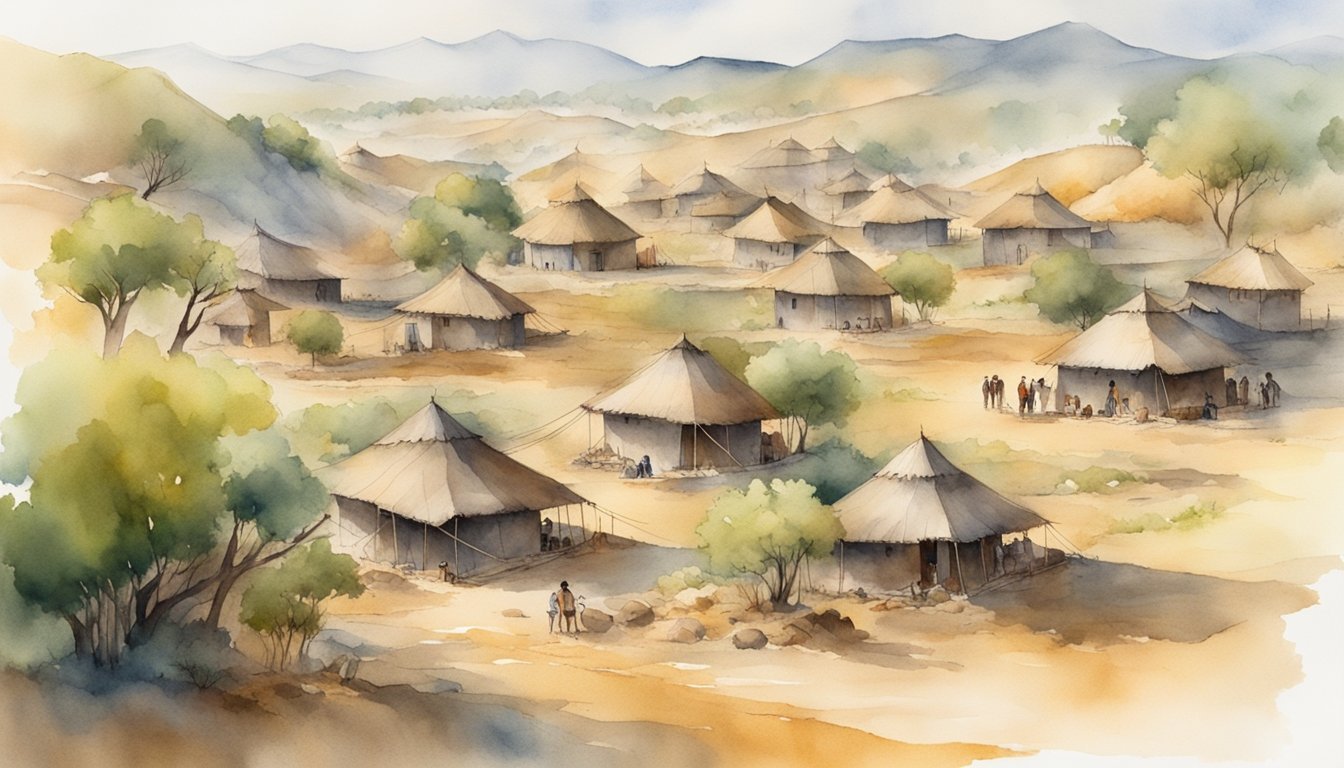Origins of Human Settlement
Human settlement has evolved from transient nomadic lifestyles to the establishment of stable, permanent communities. This transformation is rooted in significant archaeological discoveries and cultural shifts within ancient human societies.
First Known Settlements
Researchers have identified numerous locations where early humans formed some of the first known settlements. In the heart of the Fertile Crescent, Göbekli Tepe stands as a monumental site. Dated to around 10,000 BCE, this site in southeastern Turkey is notable for its massive carved stone pillars, which signify a complex society with advanced culture and religious practices. Another prominent example is the ancient village located near the Sea of Galilee, which was inhabited for at least 200 years before being abandoned circa 12,000 years ago.
Archaeological Discoveries
Significant archaeological work has led to the unearthing and dating of early human settlements. Radiocarbon dating has been instrumental in this process, allowing archaeologists to pinpoint the age of various artefacts and remnants of human habitation. Such work has illuminated the timeline of human history and the development of culture in ancient societies. Among the breakthrough findings is the discovery of human skeletal remains at Lake Mungo in New South Wales, which are estimated to be around 40,000 years old.
Transition from Nomadic Tribes to Settled Societies
The shift from roaming bands of hunter-gatherers to settled farming communities, often referred to as the Neolithic Revolution, marks a turning point in human history. The adoption of agriculture allowed for the growth of populations and the establishment of permanent villages. This transition unfolded over thousands of years as various cultures adapted to local conditions and resources. Evidence of early farmers in regions such as the Omo Valley indicates the presence of settled life long before the widespread manifestation of agriculture. The rise of farming fundamentally altered human societies, paving the way for the development of civilizations.
Technological and Social Evolution

The progression of early human societies is intimately linked with the technological advancements and social structures they developed. These advancements facilitated the transition from nomadic lifestyles to more stable, agrarian communities.
Development of Agriculture and Farming
Early humans made a monumental leap with the development of agriculture and farming, which significantly altered their lifestyle and led to the growth of populations. The evidence of early agriculture can be traced through findings of ancient stone tools, which were used for planting and harvesting crops. This shift allowed for more reliable food sources and prompted a dramatic change in human settlements.
Domestication and Sedentism
The domestication of plants and animals marked a pivotal point in human history, leading to sedentary lifestyles and the growth of villages. Early humans started to live in one place for longer periods, giving rise to more complex social structures and denser populations. Excavations in regions like West Asia have unearthed artifacts that showcase the gradual shift from hunting and gathering to a more settled way of life. This transition not only fostered advancements in agriculture but also spurred innovations in tools and pottery, reflecting the evolving needs of early communities. Over time, these developments contributed to the foundation of trade networks and the exchange of cultural practices across regions. Studies exploring IPA history and origins suggest that linguistic and societal changes often accompanied shifts in subsistence strategies, further shaping human civilization.
Cultural Innovations and Religion
As societies evolved, so did cultural complexity. Archaeological evidence such as figurines and temple remains show the development of religion and rituals. This spiritual aspect of civilization contributed to the social cohesion of growing communities. Artifacts from sites like Jebel Irhoud provide insight into the artistic expression of these early humans, reflecting a significant aspect of their cultural identity.

